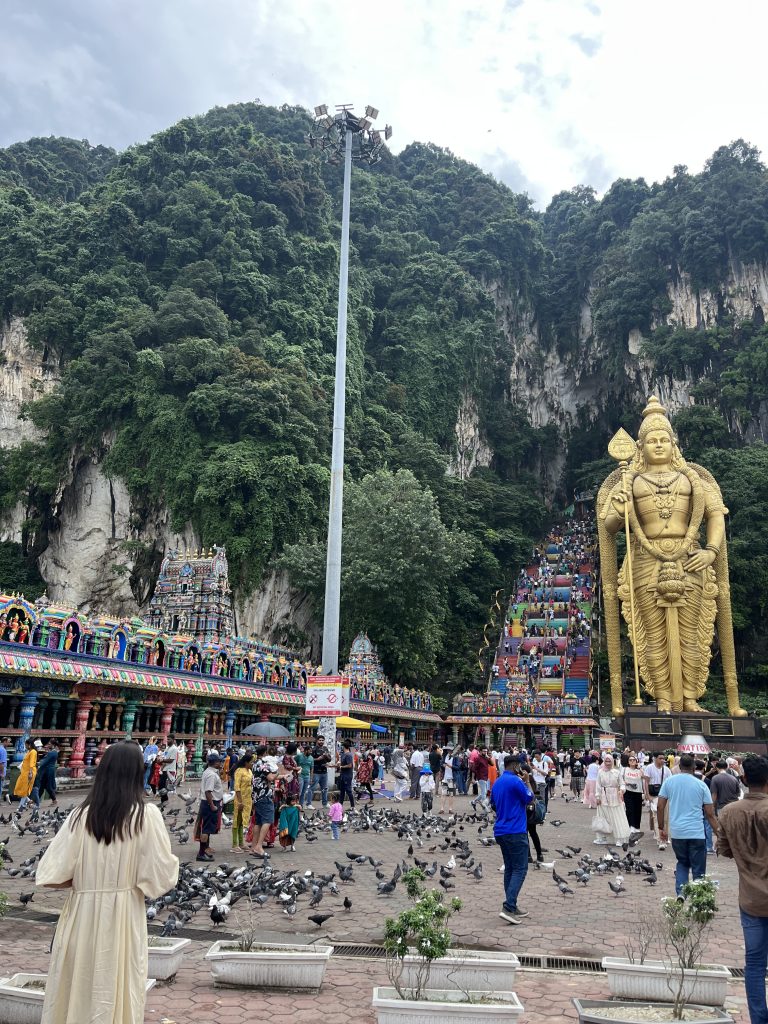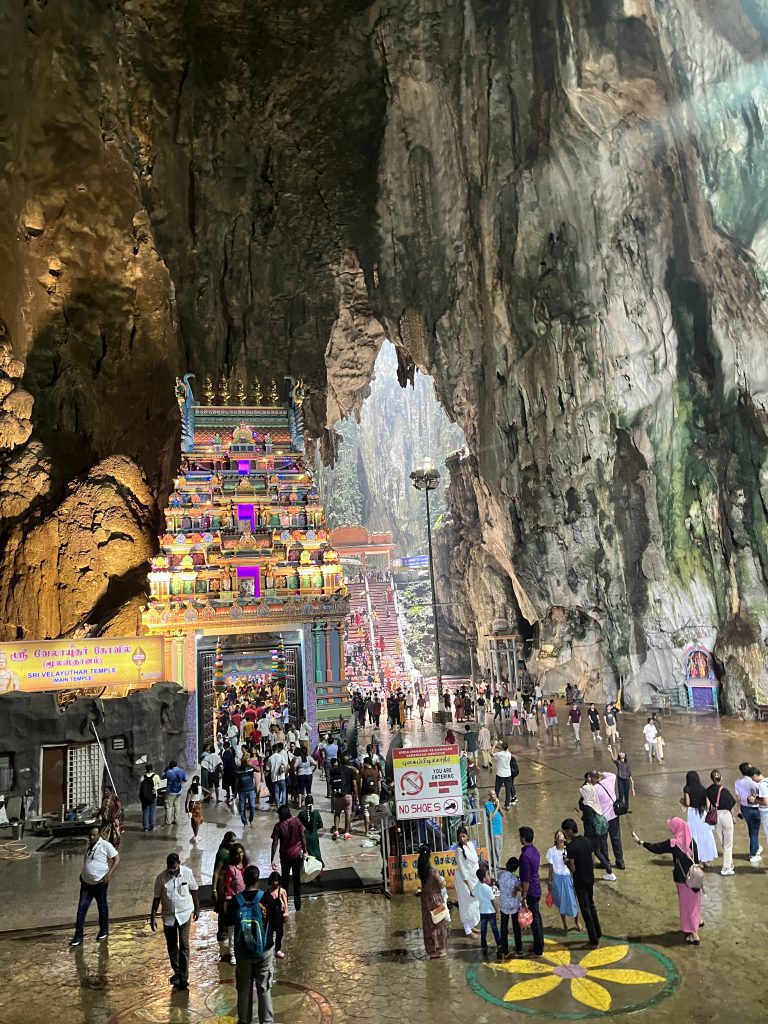To continue the theme with my last blog post about religious structures. I will now tell you about the Batu Caves that we visited while we were in Kuala Lumpur. Which might have been one of the most impressive structures I have ever been to.

Arriving at the Batu Caves in Malaysia, I was immediately struck by the grandeur of the massive limestone hill that houses the caves. The most iconic feature is the towering statue of Lord Murugan, standing at an impressive 140 feet tall and covered in a gleaming coat of gold paint. This awe-inspiring statue, the tallest of Lord Murugan in the world, watches over the 272 colorful steps that lead up to the caves. The stairs, adorned with vibrant hues and intricate designs, add to the site’s allure, with playful monkeys darting around, adding to the lively atmosphere. The surrounding area is dotted with smaller shrines and statues, each telling a different story from Hindu mythology. The air is filled with the scent of incense and the sound of devotional music, creating an atmosphere of both excitement and reverence.

Entering the main cave, known as Cathedral Cave, I was enveloped by the cool, damp air and the sound of dripping water echoing through the vast cavern. The interior is a breathtaking blend of natural and man-made wonders, with stalactites and stalagmites framing intricately carved shrines and altars dedicated to various Hindu deities. Worshippers, barefoot as a sign of respect, moved gracefully through the space, their prayers and chants creating a soothing, rhythmic soundscape. The flickering flames of oil lamps cast a warm glow on the cave walls, highlighting the delicate details of the religious icons. Observing the rituals, including the offering of fruits and flowers, provided a deep insight into the beauty and devotion inherent in Hindu worship. The experience left me with a profound respect for the faith and a sense of peace, marveling at the harmonious blend of nature and spirituality that defines the Batu Caves.
